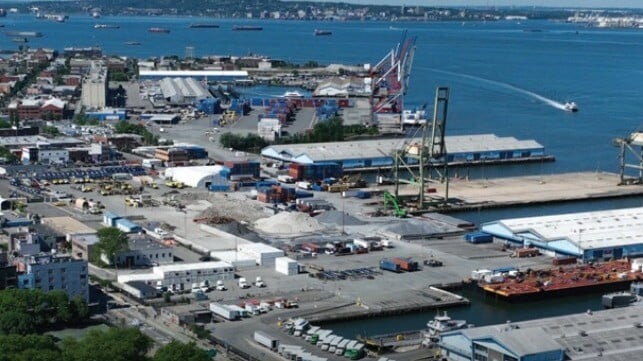New York Launches Next Phase of Revitalization for Brooklyn Marine Terminal

New York is moving forward with its plan to expand port operations through the revitalization of the Brooklyn Marine Terminal (BMT). Once a key part of the operations, the plan seeks to end 50 years of disinvestment and decay while supporting the transformation of the area into a modern maritime port and vibrant mixed-use community.
The New York City Economic Development Corporation (NYCEDC) assumed operational control of BMT in May 2024 from the Port Authority of New York and New Jersey, which has overseen the port and regional transportation for more than a century. The City and State of New York announced a $95 million plan to enhance maritime operations on the Brooklyn waterfront in 2024, focusing on BMT, which encompasses 122 acres of the waterfront in a neighborhood known as Red Hook and includes one of the current cruise terminals in the port. The city announced an initial $80 million investment that would be used to stabilize and repair Piers 7, 8, and 10, and to fund the planning for the waterfront.
NYCEDC has launched a Request for Expression of Interest to solicit proposals from domestic and international port operators, developers, and maritime industrial businesses. The companies have till December 15 to submit their comments as the city seeks input on the optimal size, layout, and economically viable uses of the commercial port.
The RFEI is part of the Vision Plan previously approved for BMT that is backed by $418 million in city, state, and federal funds. The funds will be used to transform the dilapidated marine terminal into a 60-acre, all-electric maritime port.
NYCEDC is seeking comments from those interested in acting as the operator/developer of the entire port facility or interested in a portion of the property. They can become a tenant of the port operator.
The Economic Development Corporation has already commenced work to improve the port. Earlier this year, NYCEDC executed three maritime contracts totaling an initial $18 million, including $15 million for a new electric ship-to-shore crane, $2 million for fender repairs to Pier 10, and $1 million for the demolition and removal of four out-of-service cranes. Demolition and removal of the four out-of-service cranes was completed in September.
The Brooklyn waterfront has seen revitalized interest in the past few years. Construction began in 2024 for the planned wind port facility at the South Brooklyn Marine Terminal. The 73-acre site is being revitalized into what was billed as one of the nation’s largest dedicated offshore wind ports. It will be used to support Empire Wind 1, which is being developed by Equinor.
This next phase of the port development is proceeding as a new economic impact study was released by the Shipping Association of New York and New Jersey. It highlights that the Port of New York and New Jersey is the largest container operation on the East Coast and the third largest port in the United States. At times, it has surpassed the volumes of either Los Angeles or Long Beach. NY/NJ has a current capacity of nearly 8.7 million TEU and handles over 410,000 vehicles as well as nearly 68,000 tons of breakbulk and 36.1 million tons of bulk cargo. It is also a strong cruise port handling nearly 2.4 million passengers, mostly in a season trade.
The report finds that the port supports a total of nearly 580,000 jobs, including 277,800 workers directly employed in the port industry. The Port of New York and New Jersey accounted for $18.1 billion in tax revenue in 2024.
